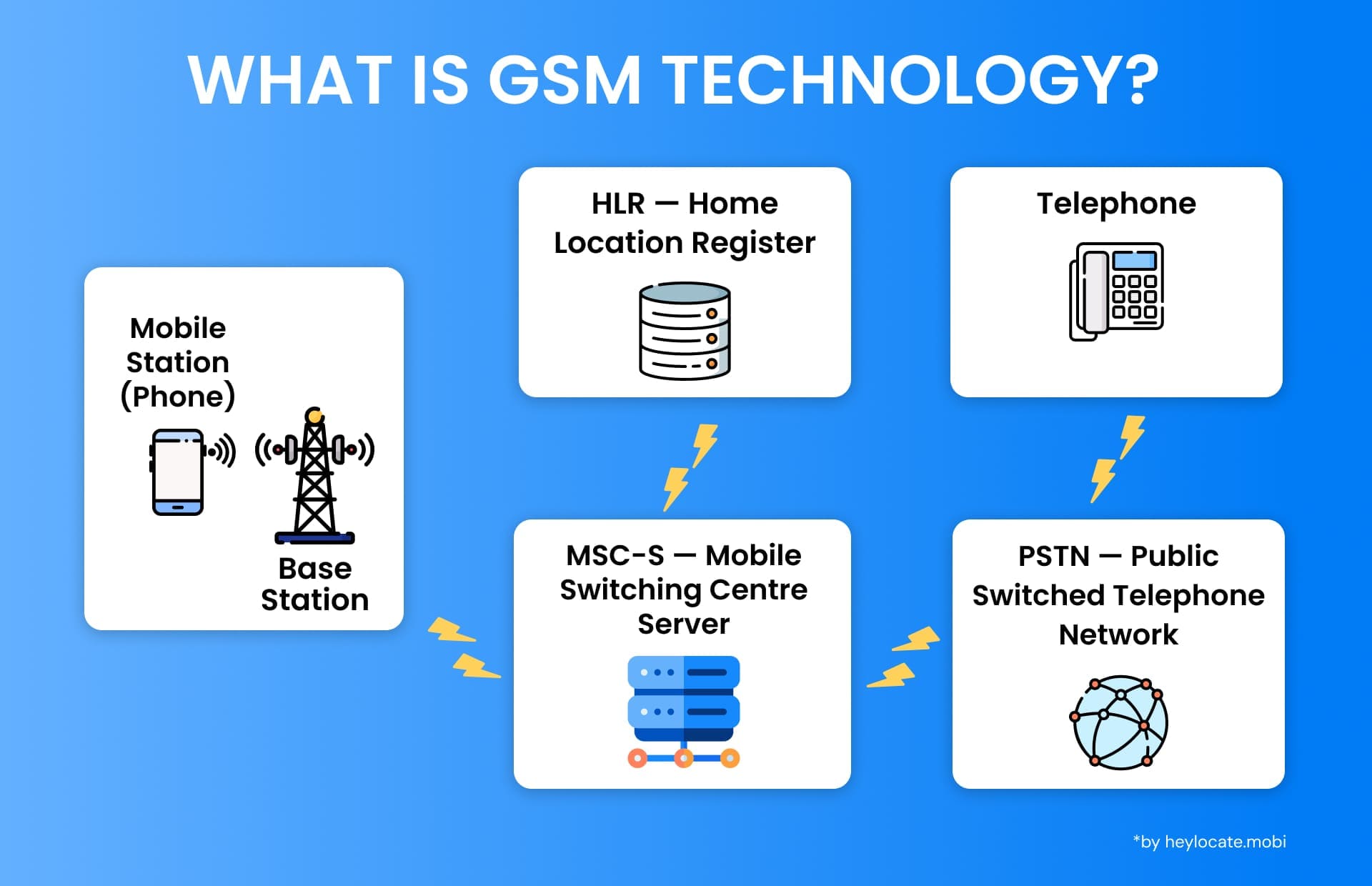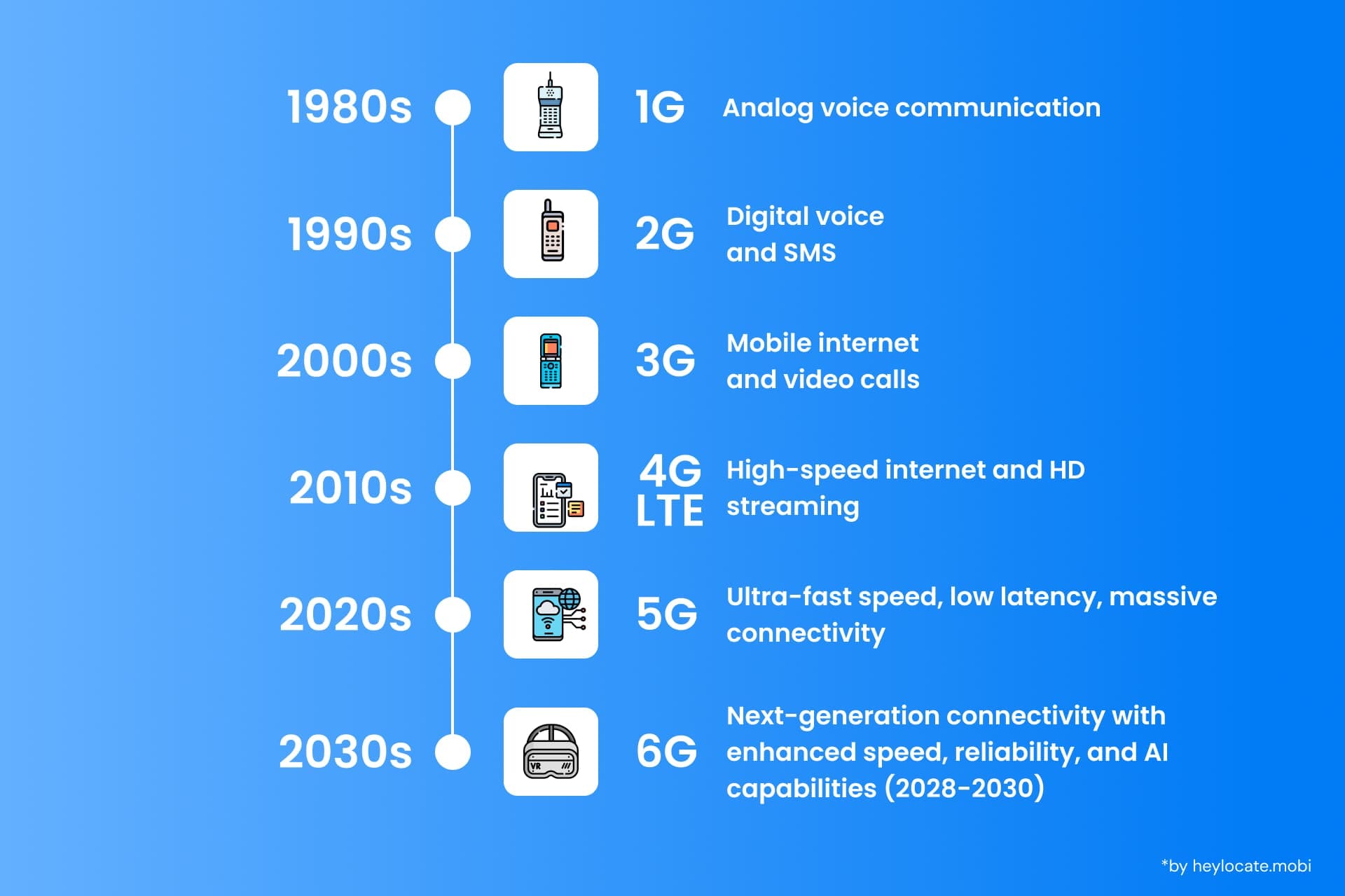Global System for Mobile Communications (GSM)
What is GSM?
GSM, short for Global System for Mobile Communications, is a standard in mobile communication developed by the European Telecommunications Standards Institute (ETSI) that represents a pivotal moment in the evolution of 2G digital cellular networks. This technology, embraced worldwide, redefined global communication dynamics and laid the groundwork for today’s mobile industry landscape. GSM, both a technical standard and a trademark overseen by the GSM Association, embodies the collective efforts of mobile network operators.

Origins and Growth of GSM
The roots of GSM delve into Europe, where it was conceived and nurtured. In the early 1980s, the Groupe Spécial Mobile (GSM) committee emerged under the umbrella of the Conference of European Post and Telecommunications (CEPT). Tasked with devising a unified cellular system for Europe, this committee was instrumental in shaping GSM’s trajectory. Eventually, oversight of GSM transitioned to ETSI, catalyzing its expansion into a global phenomenon.
The year 1991 marked a significant milestone as Finland became the inaugural nation to commercially embrace GSM, heralding its unprecedented success story. With its exceptional interoperability and global roaming capabilities, GSM swiftly gained traction, becoming the preeminent mobile technology globally, eclipsing rival standards.
Understanding GSM Technology
GSM heralded the transition from first-generation (1G) analog cellular networks to a digital realm, ushering in superior voice quality, enhanced capacity, and fortified security measures. By harnessing digital technology, GSM not only improved call clarity but also optimized spectrum utilization. Beyond voice calls, GSM facilitated data communications, empowering services like fax, email, and mobile internet browsing.
The evolutionary journey of GSM transcended 2G, embracing higher data rates and more sophisticated services. This progression saw the advent of 3G (UMTS) and subsequent iterations like 4G (LTE) and 5G (NR), each building upon the foundation laid by GSM and its successors.

International Collaboration and Deployment
The genesis of GSM epitomizes the spirit of international cooperation and political backing. In 1987, European nations inked a memorandum of understanding in Copenhagen, pledging to develop a standardized cellular system for Europe. This agreement laid the cornerstone for GSM’s standardization and paved the way for its global ascendancy.
Within ETSI, various committees and working groups collaborated to formulate the technical specifications for GSM, with contributions from experts spanning the telecommunications landscape. The unwavering political support from European governments was instrumental in driving GSM’s adoption and implementation across continents.

Network Architecture and Frequency Allocation
GSM networks boast a complex architecture comprising subsystems and components orchestrating seamless mobile communication. The Base Station Subsystem (BSS) manages the radio interface between mobile devices and the network, housing components like Base Transceiver Stations (BTS) facilitating signal transmission.
The Network and Switching Subsystem (NSS) governs call control, mobility management, and network switching, comprising elements such as Mobile Switching Centers (MSC) and Home Location Registers (HLR) for call routing and subscriber management.
GSM operates across diverse frequency bands, allocated variably across different regions. Predominantly, GSM utilizes the 900 MHz and 1800 MHz bands, supplemented by bands like 850 MHz and 1900 MHz in specific regions. This spectrum allocation ensures optimal spectrum utilization and enables widespread GSM network deployment, regulated by national authorities and international bodies like the International Telecommunication Union (ITU).
| GSM band | Frequency (MHz) | Channel numbers | Channel numbers | Channel numbers | Regional deployments |
|---|---|---|---|---|---|
| E-GSM-900 | 900 | 880.0 – 915.0 | 925.0 – 960.0 | 0–124, 975–1023 | APAC, EMEA |
| R-GSM-900 | 900 | 876.0 – 915.0 | 921.0 – 960.0 | 0–124, 955–1023 | APAC, EMEA used for GSM-R |
| DCS-1800 | 1800 | 1710.2 – 1784.8 | 1805.2 – 1879.8 | 512–885 | APAC, EMEA |
| PCS-1900 | 1900 | 1850.2 – 1909.8 | 1930.2 – 1989.8 | 512–810 | CALA, NAR |
Source: GSM frequency bands – https://en.wikipedia.org/wiki/GSM_frequency_bands
Legacy and Continuity
As mobile technology progresses, older standards like GSM are gradually phased out by network operators worldwide. Many carriers have initiated the decommissioning of GSM networks to make room for newer technologies like 4G and 5G.
Nonetheless, GSM’s legacy endures through its successors, underpinning advancements in data rates, latency, and service offerings. Additionally, GSM’s influence reverberates in the ubiquitous use of SIM cards, introduced alongside GSM and still pervasive in modern mobile devices.
Security Measures in GSM
GSM incorporates a suite of security measures to fortify communication confidentiality, integrity, and authenticity. These measures encompass cryptographic algorithms encrypting voice and data traffic, thwarting unauthorized access and eavesdropping attempts.
Despite vulnerabilities surfacing over time, efforts persist to fortify GSM network security. Strategies include deploying robust cryptographic algorithms, refining authentication mechanisms, and establishing security standards and protocols. However, ensuring GSM network security remains an ongoing and multifaceted endeavor.
References
- GSM Association
- European Telecommunications Standards Institute
- Haug, Thomas. GSM and Personal Communications Handbook. Artech House, 1998
- ITU Radio Regulations
- 3GPP Technical Specifications